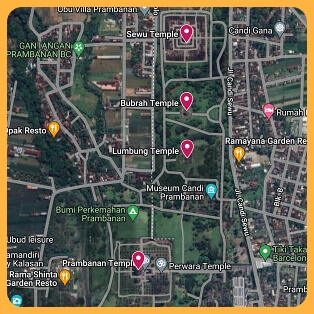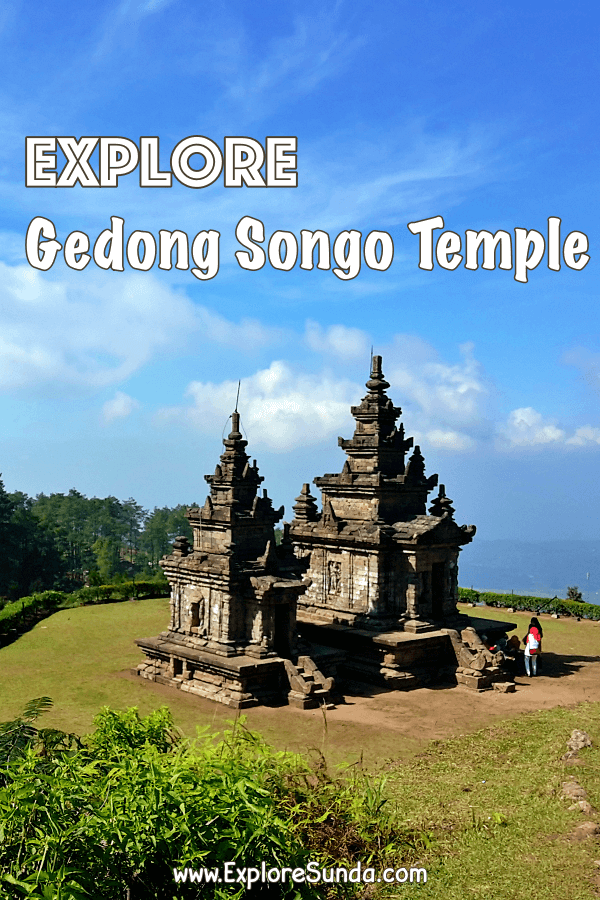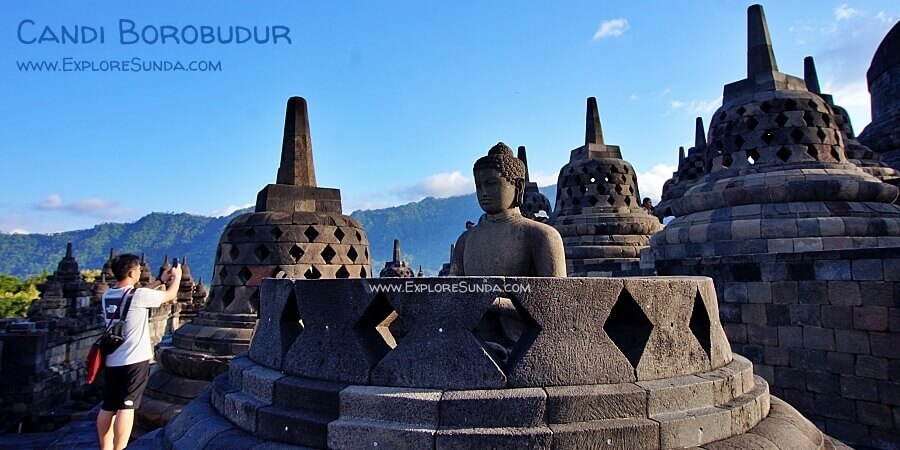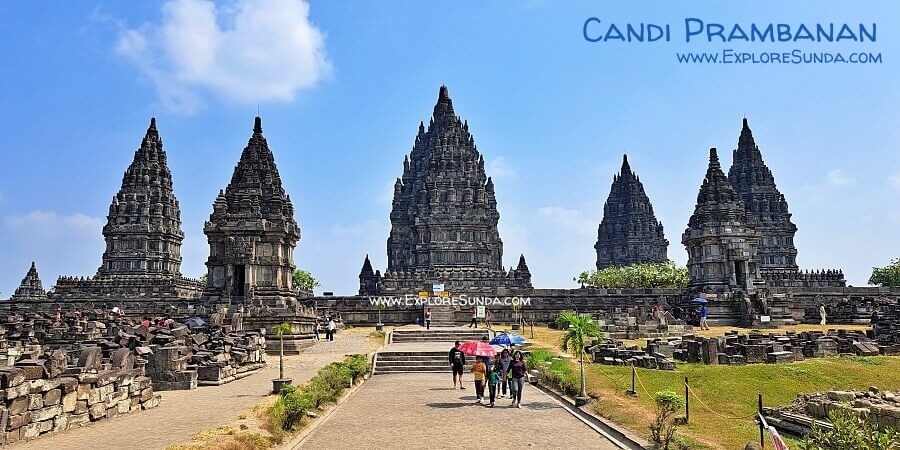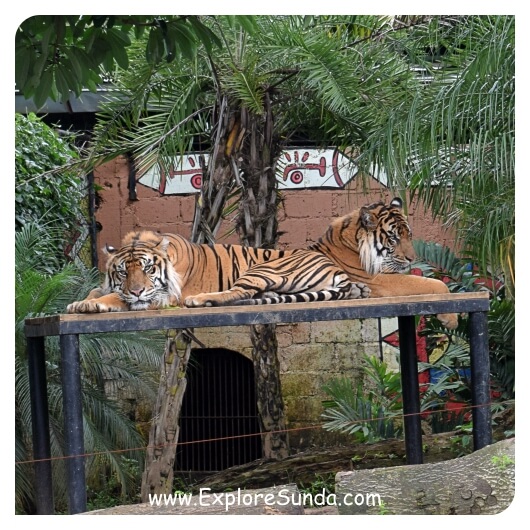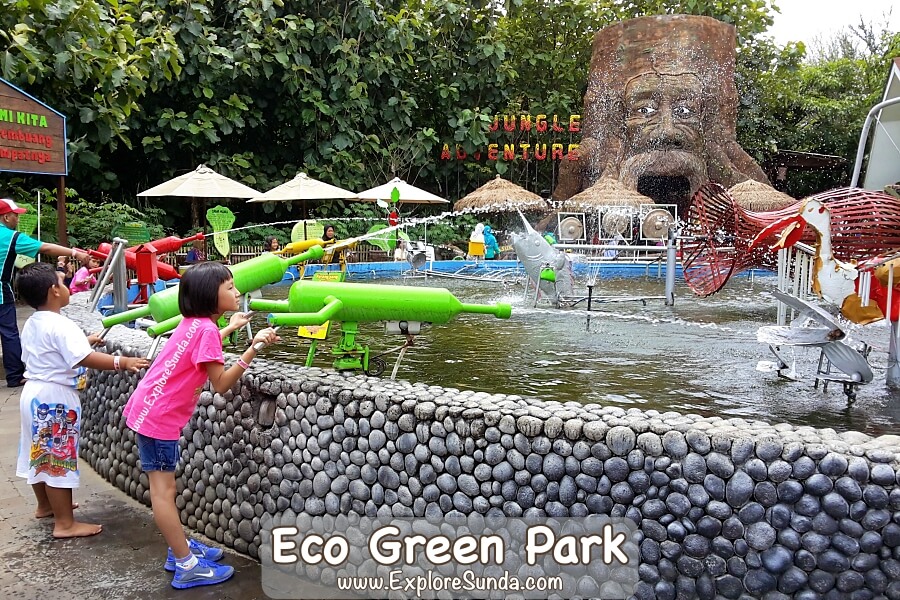- Sunda
- Beyond Sunda
- Candi Sewu, Candi Lumbung, and Candi Bubrah
Candi Sewu, Candi Lumbung & Candi Bubrah
Candi Sewu, Candi Lumbung, and Candi Bubrah are ancient Buddhist temples in Prambanan Park, while Candi Prambanan is a Hindu temple. The good news is you only need to buy one ticket to see all of these magnificent temples. It is an eighty hectares park, so we recommend you wear comfortable clothes and shoes for a long walk :)
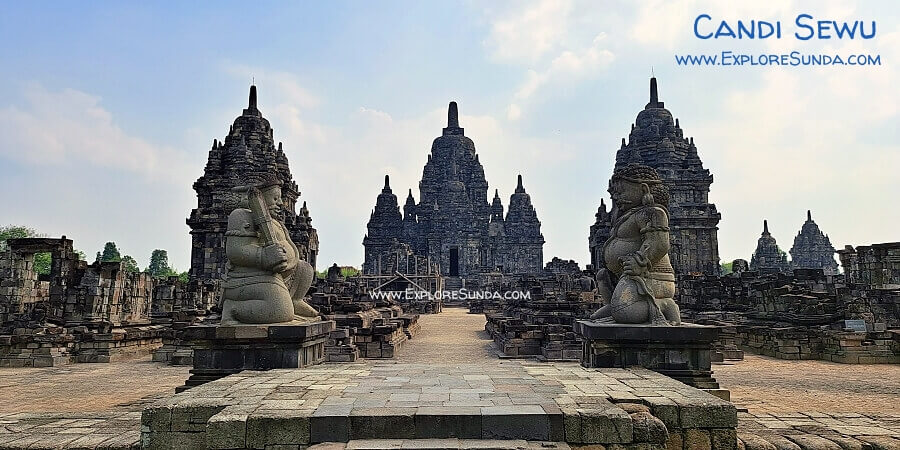 Built in eighth century, Candi Sewu is a Mahayana Buddhist temple.
Built in eighth century, Candi Sewu is a Mahayana Buddhist temple.Candi Sewu
According to the Kelurak inscription discovered in the vicinity, Candi Sewu was inaugurated in 782 AD. It was a Mahayana Buddhist temple built during the reign of Rakai Panangkaran from the Syailendra dynasty (746-784 AD), the second king of the Medang (Ancient Mataram) kingdom. It means Candi Sewu preceded Borobudur and Prambanan temples.
The second inscription mentioning Candi Sewu is the Manjusrigrha inscription. It said that its original name was Prasada Vajrasana Manjusrigrha. Prasada means temple or shrine, Vajrasana is a throne, and Grha means home. Manjusri is the Bodhisattva associated with wisdom.
Archaeologists believe that when Rakai Pikatan, a Hindu king from the Sanjaya dynasty, wedded Pramodhawardhani, the daughter of Samaratungga, a Buddhist king from the Syailendra dynasty, he renovated and expanded Candi Sewu. Rakai Pikatan then built Candi Prambanan, a Hindu temple, nearby. Our tour guide mentioned that Queen Pramodhawardhani worshiped Buddha in Candi Sewu. Meanwhile, His Majesty Rakai Pikatan went to Candi Prambanan to worship Hindu Gods.
Unfortunately, when Mount Merapi erupted circa 928 AD, it destroyed many areas, including Prambanan village and its many temples. Hence, Mpu Sindok moved the kingdom to East Java. These temples had been abandoned since that time. As time passed, they became known as Candi Sewu, which means one thousand in Javanese. Perhaps, people have mistaken it for a thousand temples because when they found it, the temple had been neglected for centuries. People mainly saw many piles of stones instead of a grand temple complex. Today, archaeologists have confirmed that Candi Sewu comprised two hundred and forty- nine temples.
 Candi Sewu and the ruins of its Candi Perwara created the illusion of the shattered of one thousand temples.
Candi Sewu and the ruins of its Candi Perwara created the illusion of the shattered of one thousand temples.Centuries after the big eruption of Mount Merapi, only locals know the whereabouts of the abandoned temples of Candi Sewu and Candi Prambanan. They were no longer Buddhist and Hindu. Hence, they didn’t know the history behind those ruins. They saw many piles of stones that looked like a thousand temples had been shattered. During that time, the story of Roro Jonggrang began to unfold.
Candi Sewu is one of the four temples in Prambanan Park. Hence, you only need one ticket to explore these four temples. However, since Candi Sewu is eight hundred meters (1.2 kilometers if you walk on the asphalt road) north of Candi Prambanan, many visitors are reluctant to walk there. You can catch an open-air bus or rent a golf cart (they are available near Candi Prambanan). Unfortunately, these vehicles will not stop at Candi Lumbung and Candi Bubrah. But they will stop for about five to ten minutes at Candi Sewu.
In my opinion, ten minutes is not enough to admire the grandeur of Candi Sewu, which was built as a royal temple compound. The temples were made of Andesite rocks and arranged in a Vajradhatu Mandala of Mahayana-Buddhism, with the main temple as the center. The diameter of the main temple was twenty-nine meters, and it was thirty meters high. Four smaller chambers surrounded the main chamber in the middle of the temple that was accessible through the east room. During the restoration, archaeologists discovered a base made of stone decorated with the sculpture of a lotus in the main chamber. They believe it was the base for a four meters high bronze statue of Bodhisattva. However, it was long gone. When we explored Candi Sewu, the outside was scorchingly hot, but as soon as we stepped into the main temple, the temperature inside was airy and cool. Perhaps the Andesite rock formation was the cause of the cool temperature?
You will see small temples surrounding the main temple in temple compounds, such as Candi Prambanan and Candi Sewu. They look like they are guarding the main temple. Hence, they are called Candi Perwara or Guardian Temple in English. In the case of Candi Sewu, four layers of Candi Perwara circle the main temple. The first layer (the closest layer to the main temple) comprised twenty-eight temples, then forty-four temples in the second layer. There were eight Candi Penjuru (Penjuru is an Indonesian word for points of compass) between the second and third layers. They were identical and bigger than Candi Perwara. The third and fourth layers of Candi Perwara consisted of eighty and eighty-eight temples, respectively. Hence, there were two hundred and forty Candi Perwara in total. Unfortunately, earthquakes and looting destroyed most of these temples. Today, the main temple has been completely restored (although the chambers are still empty), but most of Candi Perwara and Candi Penjuru are still in ruins.
There were four entrances to Candi Sewu, and the one in the east was the main entrance. You can easily identify these entrances by looking for a pair of giant statues called Dwarapala. Dwarapala is portrayed as a fierce giant guardian armed with mace. They protect temples and palaces. Depending on the status of the place, there could be one or more Dwarapala guarding it. As a royal temple, Candi Sewu had four pairs of 2.3 meters high Dwarapala.
Although the focal points of visiting the Prambanan complex are Candi Prambanan and Candi Sewu, you might be interested in exploring two smaller temples between them: Candi Lumbung and Candi Bubrah.
Candi Lumbung
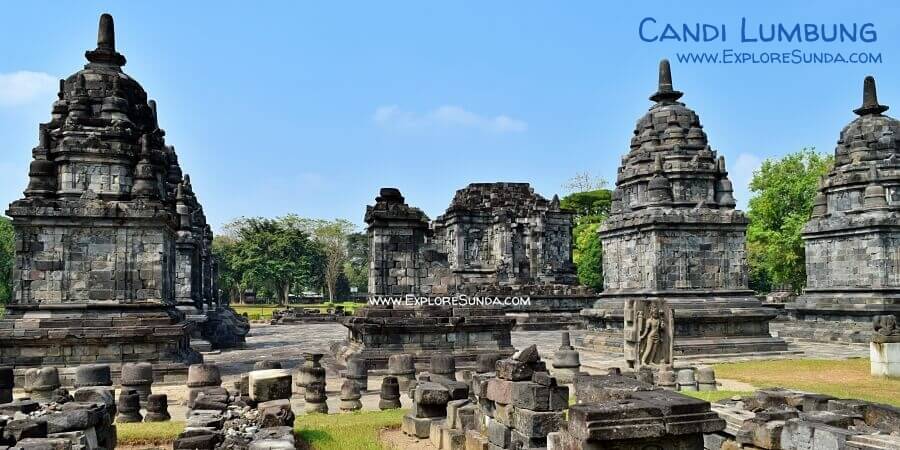 Candi Lumbung, a Buddhist temple in Prambanan park.
Candi Lumbung, a Buddhist temple in Prambanan park.Built around the same period as Candi Sewu, Candi Lumbung is also a Buddhist temple. Unfortunately, there wasn’t any illegible information about this temple in the Kelurak inscription. Hence, Lumbung was not its real name, people called it Lumbung when they saw its shape looked like a silo (Lumbung is an Indonesian word for a silo, a place to store the harvest, especially rice).
Candi Lumbung comprises one main temple and sixteen Candi Perwara (guardian temples). Sadly, the main temple was in bad shape, many of its stones were missing. After restoration, the main temple only has walls without a roof. There are several reliefs on its walls and three alcoves on each side of the walls. Archaeologists reckon that once upon a time, the statues of Dhyani Buddha were in these alcoves. All sixteen of Candi Perwara circle the main temple. They are smaller than the main temple, and their walls are plain, without any reliefs or sculptures. According to the late Prof. Bosch, Candi Lumbung was used for devotion to Triratna, a Buddhist symbol representing the Three Jewels of Buddhism (the Buddha, Dharma, and Sangha).
Candi Bubrah
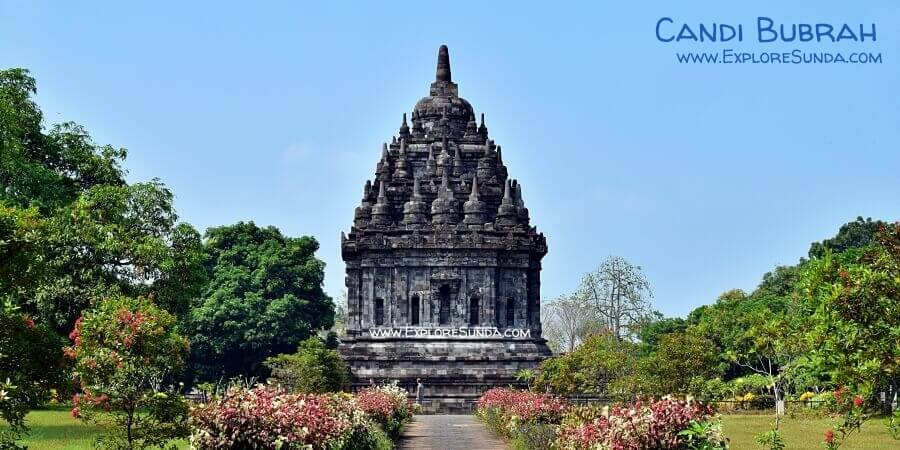 Once a ruin, now Candi Bubrah has completely been renovated.
Once a ruin, now Candi Bubrah has completely been renovated.Candi Bubrah is another temple that got its name based on its condition. Bubrah is a Javanese word for ruins, which is the condition of this temple when people found it. There wasn’t any information on its name and when it was built, but archaeologists are pretty sure it was built in the same period as Candi Sewu and Candi Lumbung. But, unlike Candi Sewu and Candi Lumbung, Candi Bubrah is a standalone temple with lots of stupas on its roof.
Without modern technology, those people built these three temples in one straight line, with Candi Bubrah in the middle. Although Candi Bubrah is the smallest of these three Buddhist temples (its size is only 12x12 square meters), Candi Bubrah unites the Vajradhatu Mandala (masculinity) represented by the statues of Dhyani Buddha in Candi Sewu and Garbhadhatu Mandala (femininity) shown in altars and alcoves for Triratna in Candi Lumbung.
Of course, exploring Candi Sewu, Candi Lumbung, and Candi Bubrah will not be complete without going to Candi Prambanan, the most famous Hindu temple in Indonesia.
Where is Candi Sewu, Candi Lumbung, and Candi Bubrah?
Ticket:
Indonesian: Rp.50,000
non-Indonesian: USD.25
Opening Hours:
6.30-17.00 Daily
The GPS coordinates of Candi Sewu are 7°44'38.2"S 110°29'35.4"E
(-7.743940, 110.493164). However, since these temples are inside the Prambanan Park, you must enter through the main gate at Jalan Raya Solo Yogyakarta no. 16. The GPS coordinates for the main gates are 7°45'18.3"S 110°29'36.0"E.
The first area you will see is an extensive parking lot. The ticketing office is in a Joglo (a Javanese house) at the end of the yard. Presently, no vehicles are allowed in Prambanan Park. So, you buy the ticket there and start walking. The first temple on the route is Candi Prambanan, which is not far from the ticket office (approx. 300 meters). Presently, Candi Prambanan comprises the inner and outer zone, each with fences and gates. Note that the entrance and the exit of the Candi Prambanan complex are not the same.
After you reach the exit gate of the Candi Prambanan complex, you can start walking to Candi Lumbung, or catch an electric bus and go directly to Candi Sewu. The distance between Candi Lumbung and the exit of Candi Prambanan is approximately 300 meters. Then you walk for another 300 meters to Candi Bubrah. Finally, another 500 meters from Candi Bubrah to Candi Sewu. Of course, after that, you have to walk back in the direction of the ticketing office to where the exit to a souvenir market is.
The long walk under the scorching sun is the main reason for renting a golf car (the price was Rp. 200,000 for up to six people in 2023) or catching Tayo, an electric bus serving Candi Prambanan to Candi Sewu.
Recent Articles
-
Roro Jonggrang: A Tale Etched in the Stones of Prambanan Temple
Nov 05, 25 11:52 PM
Unravel the ancient Javanese legend of Roro Jonggrang that bridges myth, devotion, and the grandeur of Prambanan. -
Discover the Vibrant Celebration of Imlek in Indonesia!
Jan 13, 25 03:24 AM
The Chinese New Year of 2576 will be celebrated on January 29, 2025. Discover the special things in this Imlek festival! -
The Site Map of ExploreSunda.com
Nov 26, 24 10:40 PM
A thorough site map to help you browse through the Explore Sunda site.
